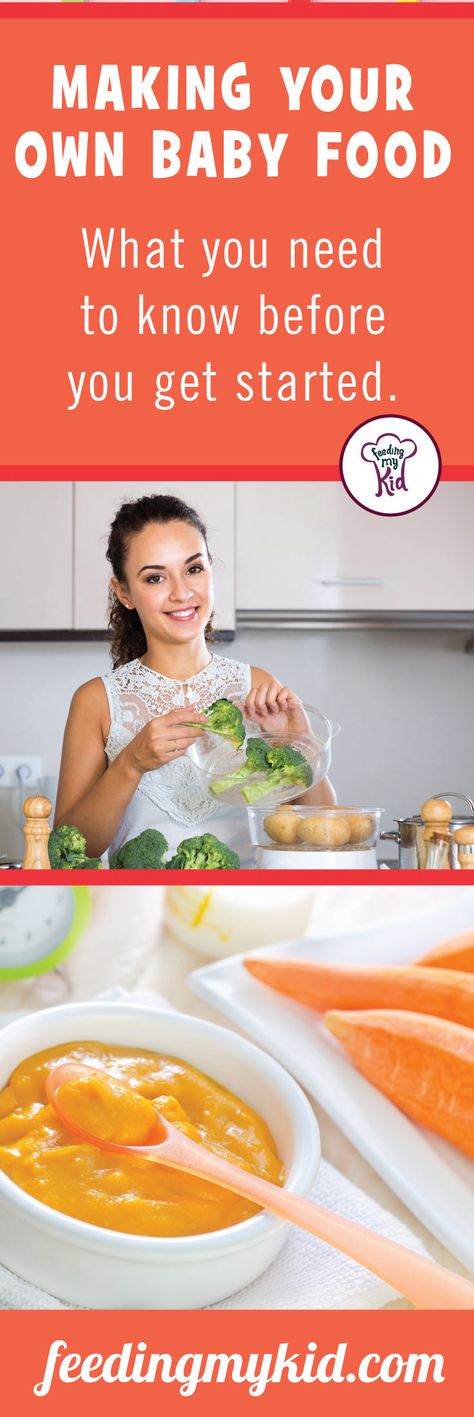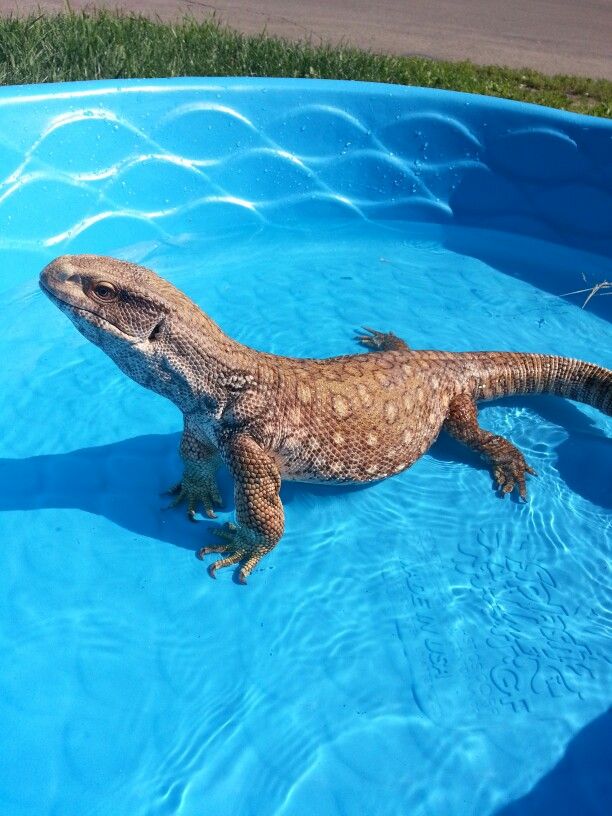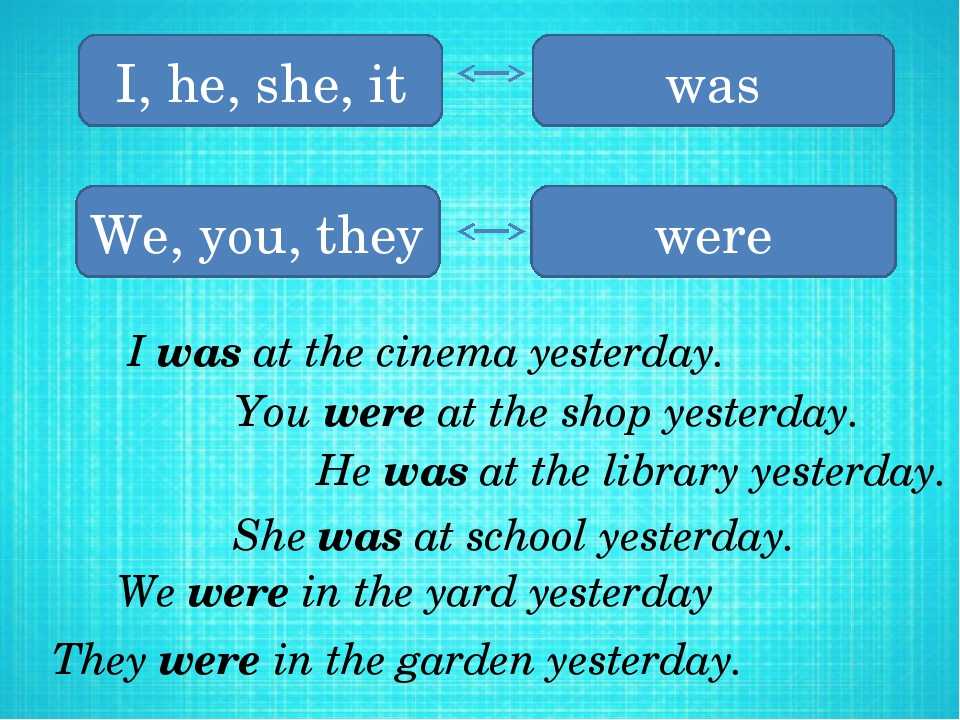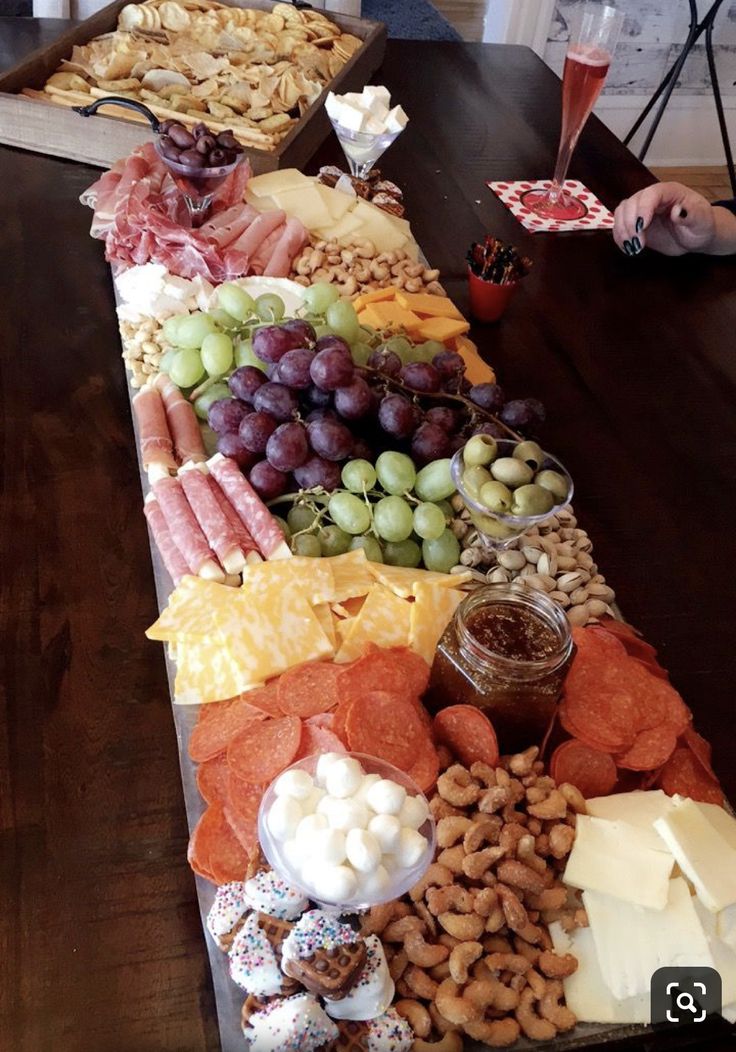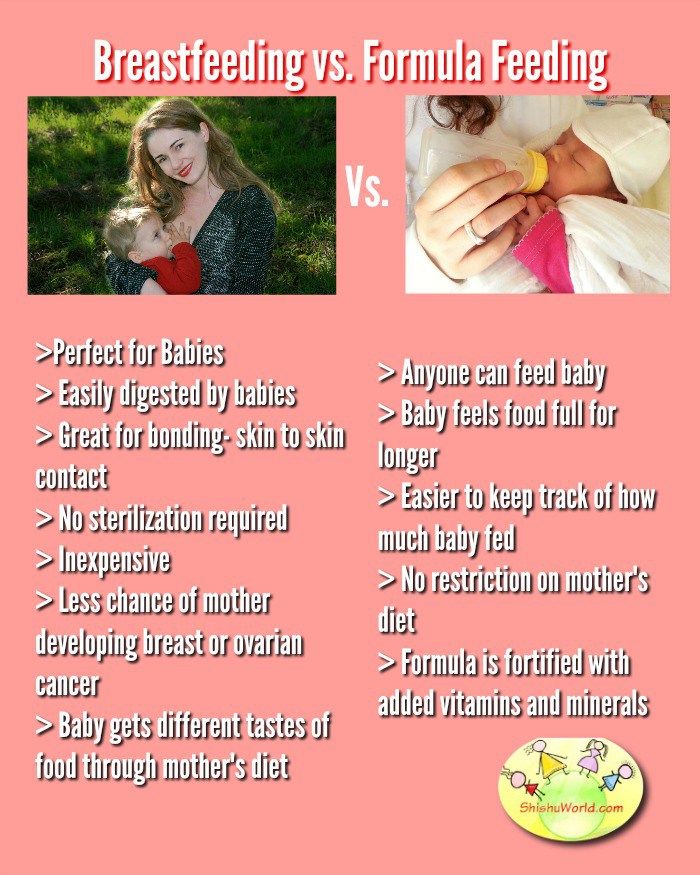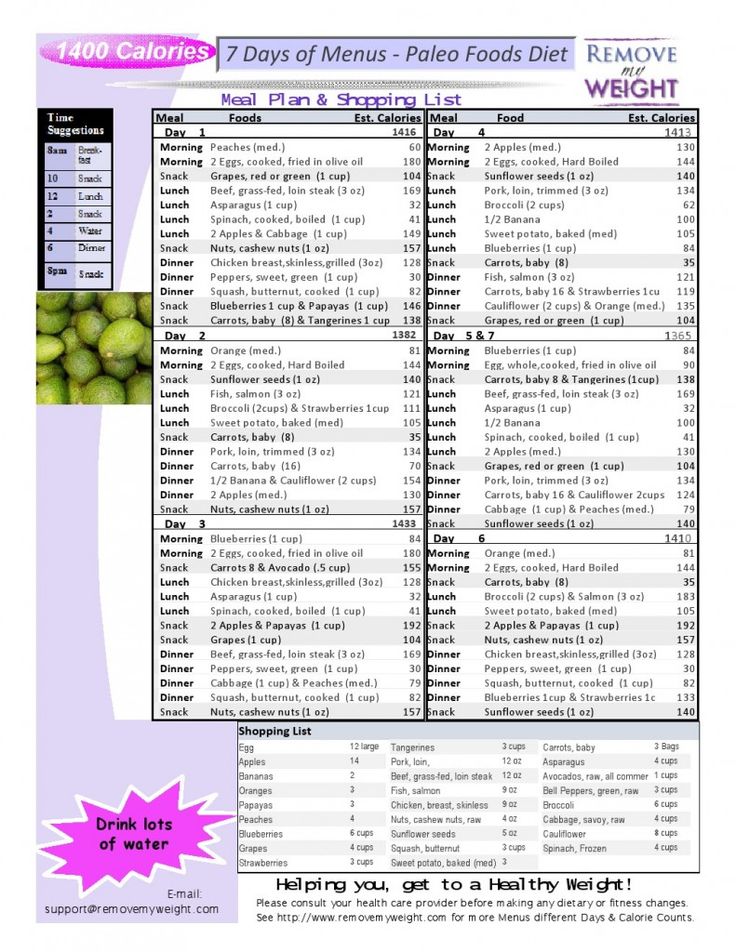How to make healthy baby food
How to Make Homemade Baby Food
Contributors: Jill Weisenberger, MS, RDN, CDE, FAND
Published: December 17, 2019
Reviewed: November 12, 2019
Wiktory/ThinkstockBreastfeeding is recommended exclusively until six months of age and along with solid foods until at least one year of age. Talk with your pediatrician about the best time for your baby to start solids and how to introduce them. Monitoring for possible food reactions is especially important, as is providing foods that contribute key nutrients like protein, iron and zinc.
If your little one is ready for solid foods, you have numerous nutritious options at the supermarket, such as iron-fortified cereal, to feed your baby. And, if you prepare homemade baby food, you have even more variety: Not only can you pick from an assortment of fruits and vegetables in the produce section, but you can also use frozen veggies and fruits canned in their own juices.
Making your own food can help expose babies to more flavors, which may help them become more adventurous eaters. Furthermore, by managing added sugars and salt, you're in greater control of your baby's nutrition.
Follow these guidelines if you choose to prepare homemade baby food:
Getting Started
If you are interested in preparing your own baby food but find the idea daunting, start with just a few homemade items. Mashing a very ripe avocado or banana is a good place to begin. After your baby responds well, you can try preparing nutrient-rich foods that might not be as common in the baby food aisle, such as beets, broccoli, turnips, asparagus, spinach, blueberries, kale, mango and papaya. Just be sure to mash or puree the foods for your baby and serve only one new single ingredient food at a time.
Use items that are in season or foods that you’re preparing for the rest of the family, but without the added sugars, salt and seasonings. Everyone in the family will get to enjoy the same nutritious foods, which will save you time and effort.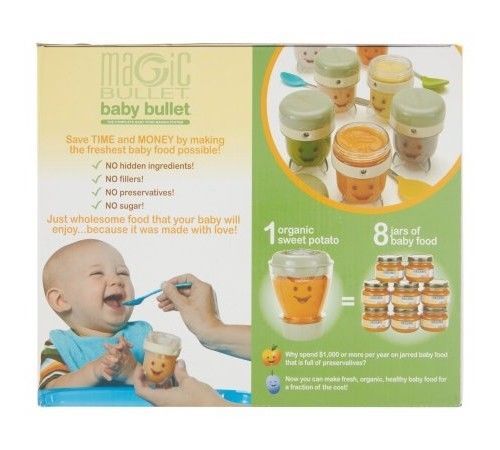
Preparing Food
Be vigilant about sanitation. Use only well-scrubbed and washed produce, clean hands, utensils, cutting boards and countertops.
- Wash and peel produce and remove any seeds or pits. Take special care with fruits and vegetables that are grown close to the ground as they may contain spores of Clostridium botulinum or contain other harmful bacteria that can cause food poisoning.
- Cook food until it's very tender. Steaming and microwaving in just a little water are good methods to retain vitamins and minerals in fruits and vegetables. When cooking meats and fish, remove all gristle, skin and bones before cooking.
- Puree or mash fresh fruit or fruit canned in its own juice. Never add honey to foods or drinks for children under 12 months, as it may contain Clostridium botulinum spores. Also avoid adding corn syrup or other sweeteners as they only provide extra calories but not nutrients.
- Make sure the texture and temperature are appropriate.
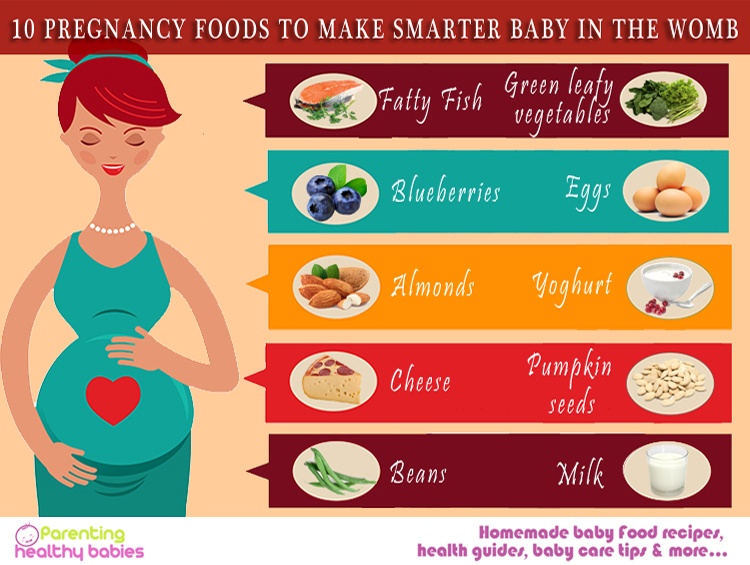 Some foods pose a choking risk and are not recommended for infants, such as whole grapes, raisins, and pieces of hot dog. Pureed foods can be thinned, if needed, by adding breastmilk, formula, or water. Cow’s milk and milk alternatives should not be used during the first year. After warming solid foods, be sure to mix thoroughly and recheck the temperature so as not to burn the infant’s mouth.
Some foods pose a choking risk and are not recommended for infants, such as whole grapes, raisins, and pieces of hot dog. Pureed foods can be thinned, if needed, by adding breastmilk, formula, or water. Cow’s milk and milk alternatives should not be used during the first year. After warming solid foods, be sure to mix thoroughly and recheck the temperature so as not to burn the infant’s mouth. - Cook eggs, meats and poultry until well done. Babies are especially susceptible to food poisoning caused by eating undercooked meats, poultry and eggs. Be certain that all meats and fish are cooked to proper temperatures; 145°F for fish and whole cuts of beef and pork, 160°F for ground beef and egg dishes and 165°F for all types of chicken and poultry or leftovers.
- For convenience, freeze prepared baby food for later use. Freeze it in small portions in a clean ice cube tray. Once frozen, put the cubes into clean, airtight, freezer-safe food containers for single-serving portions.
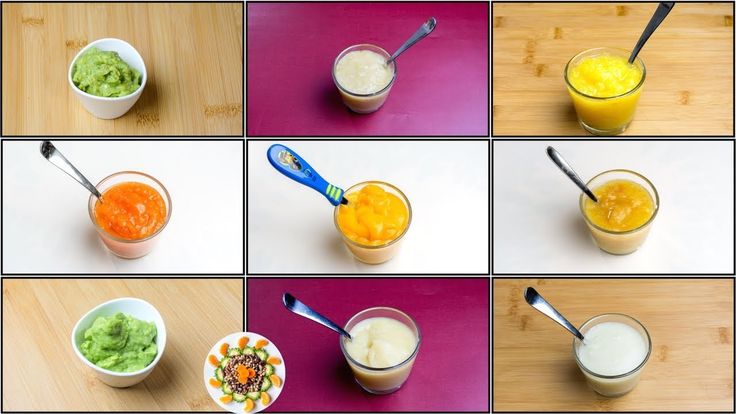 As another method, use the "plop and freeze" technique: plop meal-size spoonfuls of pureed food onto a cookie sheet, freeze, then transfer the frozen baby food to clean freezer-safe containers for storage in the freezer.
As another method, use the "plop and freeze" technique: plop meal-size spoonfuls of pureed food onto a cookie sheet, freeze, then transfer the frozen baby food to clean freezer-safe containers for storage in the freezer. - If you're cooking the same food for the rest of the family, remove the baby's portion before adding salt and seasonings. A baby's taste buds can be very sensitive. As the baby grows and becomes more used to table food, feel free to add seasonings other than salt.
Keeping Baby Safe
Preparing homemade baby food requires extra care to keep baby's food safe and to retain the nutrients from fresh foods. After you've prepared the food, either serve it or refrigerate it right away. Keep homemade baby food in a covered container for one or two days in the refrigerator or one to two months in the freezer with a label and date. Small portions served in separate dishes are ideal because any food that was served, but not eaten, must be thrown out. Bacteria thrive in the mouth, so if a spoon goes into the baby's mouth and then touches the food, that food should not be saved for later.
Bacteria thrive in the mouth, so if a spoon goes into the baby's mouth and then touches the food, that food should not be saved for later.
It's Fine To Buy Store-Bought Baby Food Too
Commercial baby foods are nutritious options for feeding baby, too. Today's commercial baby foods provide balance and variety with carefully controlled and consistent nutrient content, so don’t worry if you supplement your baby's intake with commercial baby foods. Be sure to talk to your baby's health care provider about which foods are best for your baby and if any dietary supplements may be recommended.
Tags
Find a Nutrition Expert
Looking for credible nutrition information and recommendations? The Academy of Nutrition and Dietetics' network of credentialed food and nutrition practitioners are ready to help!
See Directory
10 Easy Homemade Baby Food Ideas (No-Cook, Super Fast, Stage 1)
Learn how to make the EASIEST homemade baby food recipes (stage 1) for your little one with these super simple no-cook ideas.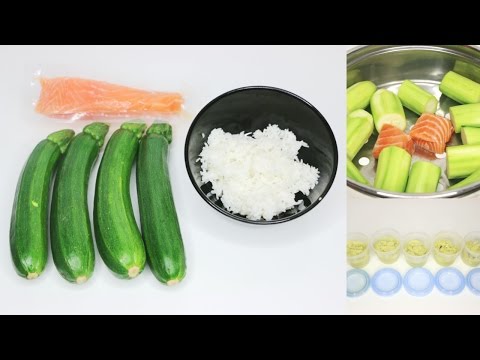 Plus: I have the best tips for making them ahead and freezing them so you can batch cook and simplify your days!
Plus: I have the best tips for making them ahead and freezing them so you can batch cook and simplify your days!
Homemade Baby Food
As a mom to three kids, I know firsthand how the urge to make homemade baby food can be both exciting and a little daunting. And if you have a busy schedule or other kids in the house, finding the time to actually do it can seem impossible. But, there are so many healthy foods that you can transform into stage 1 baby food purees with hardly any work or special equipment at all!
TIP: I use a regular blender for all of these recipes, so you don’t need to buy a special baby food maker unless you want to.
Baby Food Recipes for 6, 7, and 8 Month Old Babies
These homemade baby food ideas are designed for younger babies who are still eating thinner purees, but you can of course use them for older babies and toddlers too. Each can be served as is, or you can combine more than one together to create new flavors if you’re feeling creative!
TIP: If you want to add fat or protein to any of these fruit or veggie purees, simply stir in a little whole milk yogurt, coconut cream, or Avocado Puree.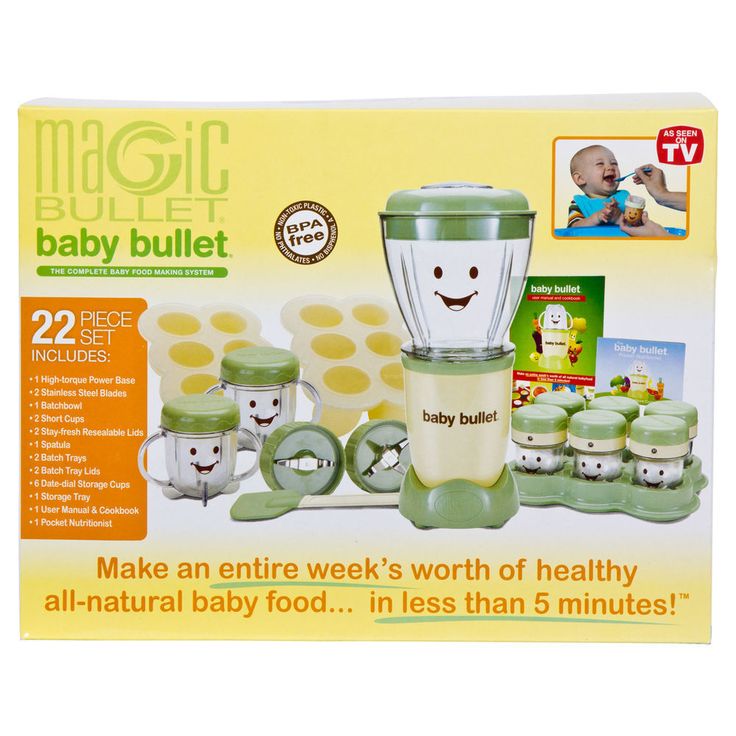
Best Way to Make Baby Food
I’ve found that the easiest and most approachable way to make baby food is to simply use a blender. With fresh ingredients and a little water, breastmilk, or formula to thin it as needed, you can easily make your baby meals without investing in equipment you may not use very long.
TIP: You’ll want to start with at least 1 cup of any base ingredient to ensure that there’s enough in the blender to fully blend up.
Tools You Need to Make Homemade Baby Food
To make these baby food recipes you’ll need:
- Blender (you could also use an immersion blender if yours is very strong)
- Water, formula, or breastmilk to thin as needed
- Knife for chopping produce
- Spoon
- Bowls
- Ice cube tray
- Freezer bags for storage
- Baby food storage containers
Stage 1 Baby Food
These baby foods are meant for early eaters as they are typically very thin and easy for a baby to move around in their mouths.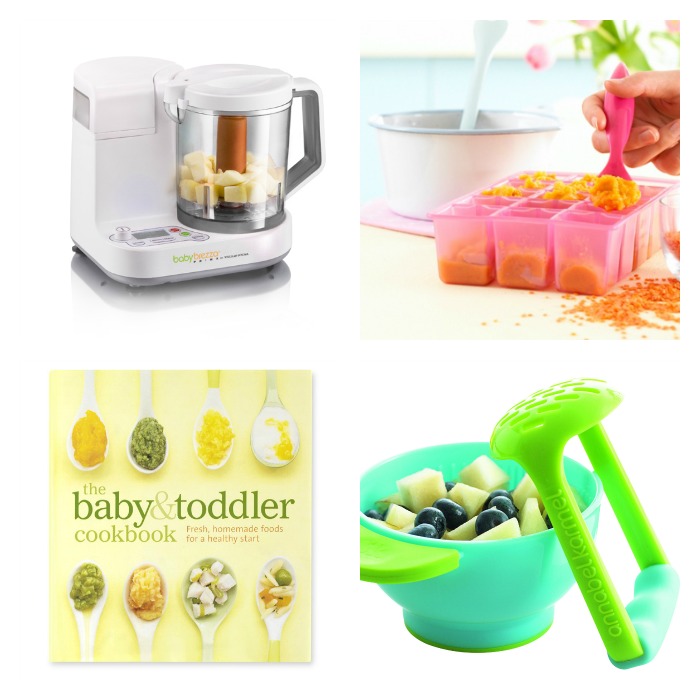 I follow the recommendations to wait until 6 months to start solids, so I personally don’t worry excessively about this distinction as I like babies to experience some texture in their purees. (The ones you find at the store are low allergenic foods and are meant for 4+ months.)
I follow the recommendations to wait until 6 months to start solids, so I personally don’t worry excessively about this distinction as I like babies to experience some texture in their purees. (The ones you find at the store are low allergenic foods and are meant for 4+ months.)
Stage 2 Baby Food
These baby foods are typically a little bit thicker, sometimes include more than one ingredient, and offer a wider variety of ingredients. Most babies are ready for these sorts of purees around 7-8 months, or once they’ve mastered thinner purees. (Again, since I like to do a combined baby feeding approach with both baby led weaning and purees, I don’t worry too much about following the calendar to decide when to introduce these.)
TIP: As a backup to my homemade baby foods, I love the options from Amara Organic Baby Food (paid affiliate link) since you simply need to stir it together with breast milk, formula, or water and it’s ready to serve.
And now, for my ten go-to homemade baby food purees that you don’t even need to cook!
1.
 Avocado Puree
Avocado PureeTo make avocado puree for a baby, you just need a fresh avocado, a blender, and some lemon juice if you plan to store it for later. I sometimes even do this with just a fork if the avocado is super soft! It’s a perfect way to introduce a low allergenic food that’s rich in healthy fats.
TIP: Get the full recipe for Avocado Puree here.
2. Bean Puree
Baby’s early foods don’t have to be all one food group and beans are a great food to have in the mix. You can do this easy bean puree with chickpeas, pinto beans, black beans, or even white beans, thinning it as needed with water, formula, or breastmilk. This is a great puree to mix with a little sweet potato or butternut squash.
TIP: Get the full recipe for Bean Puree here.
3. Blueberry Puree
Using fresh or frozen blueberries, this easy berry puree is loaded with fresh flavor and antioxidants. It’s delicious on its own or stirred into plain whole milk yogurt or baby oatmeal.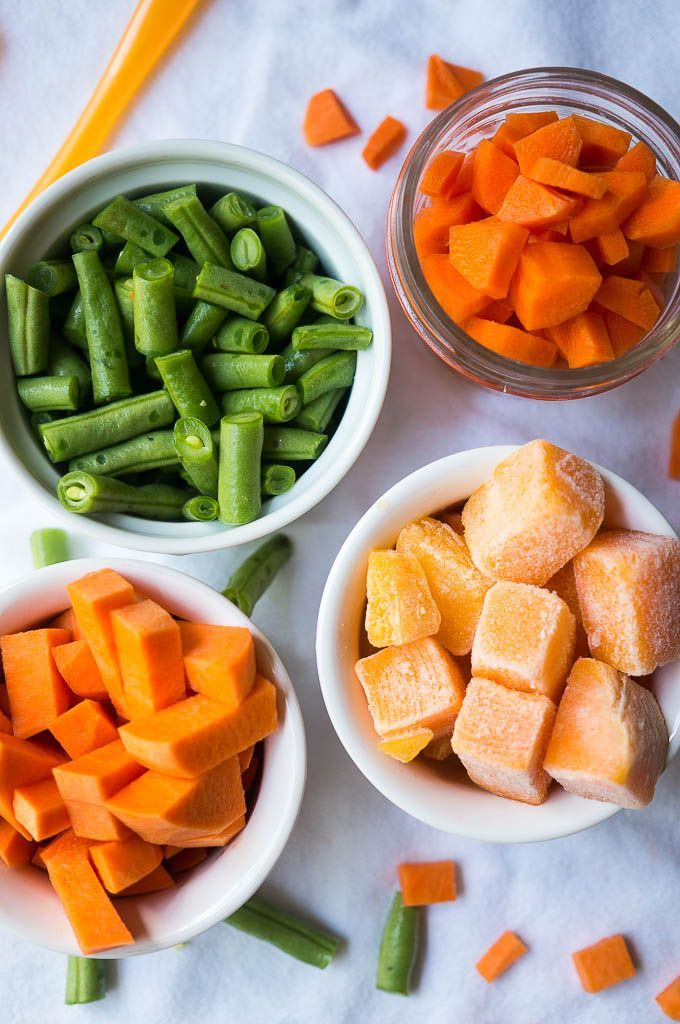 (Note that it thickens up as it sits in the fridge, so you’ll need to stir it well to serve.)
(Note that it thickens up as it sits in the fridge, so you’ll need to stir it well to serve.)
TIP: Get the full recipe for Blueberry Puree here.
4. Kiwi Puree
With a bright flavor, this puree is great for babies who seem to love flavor—and it’s a fun one to make and store for later. You’ll want to make sure that you choose very ripe and sweet kiwi and taste it before you make the puree to ensure that it’s not too tart. (If it seems tart, you can mix with banana or applesauce.)
TIP: Get the full recipe for Kiwi Puree here.
5. Mango Puree
Using fresh or thawed frozen mango, this baby puree blends up in seconds. It’s bright, flavorful, and a great source of immune-boosting vitamins. Taste your mango to be sure that it’s sweet and not too tart. (If it’s tart, you can add Applesauce or ripe Banana Puree.)
TIP: Get the full recipe for Mango Puree here.
6. Peach Puree
Turn fresh or frozen and thawed peach slices into a super smooth Stage 1 baby food with this easy blender method. You’ll want to strain out the skin since it’s hard to blend up smooth, even with a high powered blender, but that’s so easy to do! This baby food recipe is a nice alternative to applesauce.
You’ll want to strain out the skin since it’s hard to blend up smooth, even with a high powered blender, but that’s so easy to do! This baby food recipe is a nice alternative to applesauce.
TIP: Get the full recipe for Peach Puree here.
7. Whipped Peanut Butter
This may not have occurred to you, but whipped peanut butter is a great baby food! This is a perfect way to introduce baby to peanut butter and to offer it safely there after. You just need to stir water into unsweetened creamy peanut butter until it forms a whipped consistency like yogurt. It’s smooth, not too sticky, and packed with protein.
TIP: Get the full scoop on introducing peanuts to baby here.
8. Pineapple Puree
Blend up fresh or frozen pineapple chunks into a tropical baby food puree that’s smooth and creamy. This is yummy on its own or paired with whole milk plain yogurt. Taste your pineapple to ensure that it’s not too tart. (If it’s tart, you can add Applesauce or ripe Banana Puree. )
)
TIP: Get the full recipe for Pineapple Puree here.
9. Strawberry Puree
Fresh strawberries blend up into a perfectly smooth homemade puree without the need for any additional liquid. You can serve this as is, or mix with applesauce if desired. The flavor of your berries will determine the flavor of your puree, so be sure to taste them for sweetness.
TIP: Get the full recipe for Strawberry Puree here.
10. Banana Puree
Ripe bananas make great homemade baby food with the help of just a blender. This is a super simple baby food to make at home and it’s easy to digest as a Stage 1 baby food. Use ripe bananas with brown spots to ensure that the puree tastes sweet and is easy for baby to digest.
TIP: Get the full recipe for Banana Puree here.
Homemade Baby Food Storage
The easiest way to store homemade baby food is to add fresh purees to an ice cube tray and freeze. Once frozen, simply pop out the cubes and store in labeled freezer bags for up to 3 months. These are a perfect way to make it easy to send homemade baby food to daycare or to simply get ahead for the coming week.
Once frozen, simply pop out the cubes and store in labeled freezer bags for up to 3 months. These are a perfect way to make it easy to send homemade baby food to daycare or to simply get ahead for the coming week.
TIP: Find more information about storing baby food—including the best small food storage containers—here.
]
Tips for Making the Best Homemade Baby Food
- Use at least 1 cup base ingredient to ensure that a blender has enough volume to blend well.
- Thin any homemade puree with water, formula, or breast milk.
- Freeze any baby food you won’t use within 3 days in an ice cube tray. Transfer frozen cubes into freezer storage bags for up to 3 months. Thaw these frozen baby food recipes in an airtight container in the fridge overnight before you plan to serve.
- Taste all fresh foods for sweetness and to ensure that your puree isn’t too tart. To tame tartness, mix any puree with Banana Puree , Avocado Puree, Applesauce, or Mashed Sweet Potato.

- If you want to add fat or protein to any of these fruit or veggie purees, simply stir in a little whole milk yogurt, coconut cream, or Avocado Puree.
- Use breastmilk or formula in place of the water if desired.
- Mix two purees together for more complex flavors.
- Add texture to any puree by stirring in baby oatmeal or hemp seeds.
- For more details on each of these, find them here: Avocado Puree; Banana Puree, Bean Puree; Blueberry Puree, Kiwi Puree, Mango Puree, Pineapple Puree, Peanut Butter Puree, Peach Puree, Strawberry Puree
I’d love to hear your feedback on this way of making simple baby food, so please comment below. I so appreciate hearing your experience with my recipes!
Prep Time 5 minutes
Cook Time 0 minutes
Total Time 5 minutes
Author Amy Palanjian
Cuisine American
Course Baby Food
Calories 42kcal
Servings 4
- ▢ 1 cup blueberries, diced strawberries, diced peaches (peeled), diced kiwi (peeled), diced pineapple (peeled), diced banana (peeled), diced mango (peeled), diced avocado (peeled), OR beans (rinsed and drained)
- ▢ water, formula, or breast milk (as needed)
Choose one fruit, the avocado, or beans and add to a blender.

If making the puree with blueberries, strawberries, peaches, kiwi, pineapple, mango, or beans, add ¼ cup water and blend, adding more water as desired to make a thin, very smooth puree. If making avocado or banana, just blend (without water) until very smooth.
Serve or store in an airtight container for 3-5 days in the fridge, or up to 3 months in the freezer.
Vitamix Blender
Storage Containers
Silicone Ice Cube Tray
- Use at least 1 cup base ingredient to ensure that a blender has enough volume to blend well.
- Thin any homemade puree with water, formula, or breast milk.
- Freeze any baby food you won't use within 3 days in an ice cube tray. Transfer frozen cubes into freezer storage bags for up to 3 months. Thaw these frozen baby food recipes in an airtight container in the fridge overnight before you plan to serve.
- Taste all fresh foods for sweetness and to ensure that your puree isn't too tart.
 To tame tartness, mix any puree with Banana Puree , Avocado Puree, Applesauce, or Mashed Sweet Potato.
To tame tartness, mix any puree with Banana Puree , Avocado Puree, Applesauce, or Mashed Sweet Potato. - If you want to add fat or protein to any of these fruit or veggie purees, simply stir in a little whole milk yogurt, coconut cream, or Avocado Puree.
- Use breastmilk or formula in place of the water if desired.
- Mix two purees together for more complex flavors.
- Add texture to any puree by stirring in baby oatmeal or hemp seeds.
- For more details on each of these, find them here: Avocado Puree; Banana Puree, Bean Puree; Blueberry Puree, Kiwi Puree, Mango Puree, Pineapple Puree, Peanut Butter Puree, Peach Puree, Strawberry Puree
Serving: 0.25cup, Calories: 42kcal, Carbohydrates: 11g, Protein: 1g, Fat: 1g, Saturated Fat: 1g, Polyunsaturated Fat: 1g, Monounsaturated Fat: 1g, Sodium: 1mg, Potassium: 57mg, Fiber: 2g, Sugar: 7g, Vitamin A: 40IU, Vitamin C: 7mg, Calcium: 4mg, Iron: 1mg
Tried this recipe?Rate in the comments and tag @yummytoddlerfood on IG!
What dishes to include in the children's menu to make it tasty and healthy
In winter, vulnerable children's immunity needs to be strengthened by any available means.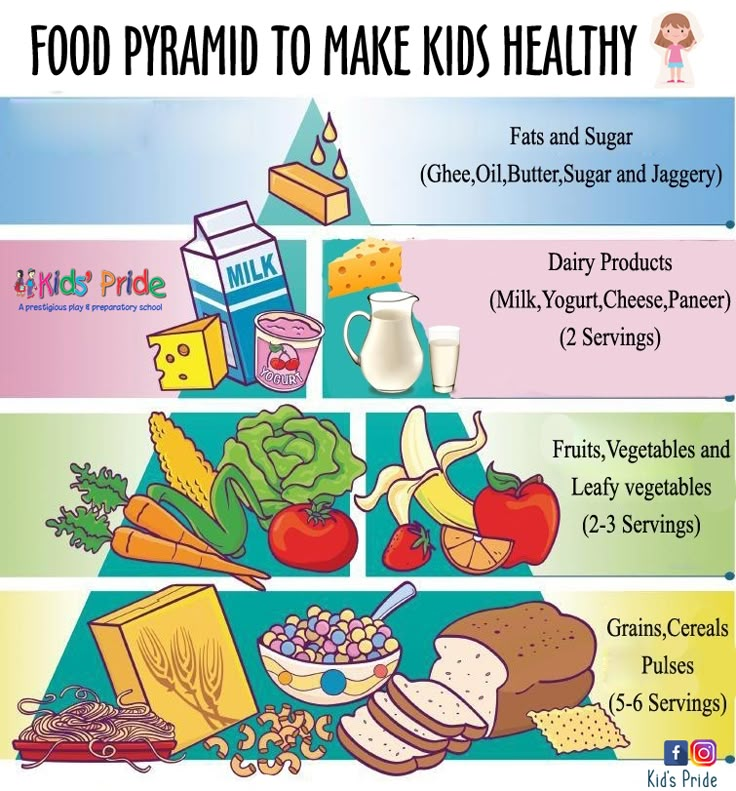 And for this, you should add as many healthy dishes with a shock portion of vitamins to your daily diet as possible. Mostly it is vegetables in all possible variations. They are good to bake and stew, serve as a side dish, make soups and even delicious desserts based on them. This topic is dedicated to our selection of recipes.
And for this, you should add as many healthy dishes with a shock portion of vitamins to your daily diet as possible. Mostly it is vegetables in all possible variations. They are good to bake and stew, serve as a side dish, make soups and even delicious desserts based on them. This topic is dedicated to our selection of recipes.
Soup classic
Chicken soup with vegetables is the perfect embodiment of a balanced vitamin meal for a child. To prepare it, take 2 chicken thighs, pour 3 liters of water and leave to cook over low heat for half an hour. In the meantime, we will make a ruddy frying of the onion, carrot and celery stalk in a saucepan. Just don't overcook the vegetables. As soon as they soften, pour 3 potatoes into cubes and fry for another 5 minutes.
Strain the finished broth and pour the contents of the pot. When the potatoes are completely cooked, lay 50-60 g of egg noodles, salt and pepper the soup to taste, add fresh herbs. Grind the cooled chicken thighs and also pour into the pan.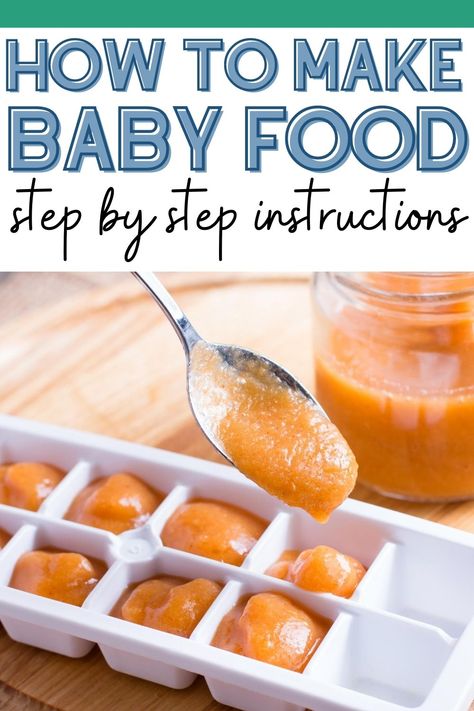 It remains to bring the soup to readiness and let it brew under the lid.
It remains to bring the soup to readiness and let it brew under the lid.
Peppers with a surprise
For the second, offer your child hearty stuffed peppers. Let's start with the filling first. To do this, cook until half cooked 100 g of rice. While it is quietly boiling in a saucepan, we pass the onion into cubes and grated carrots until golden brown. We mix the frying with semi-cooked rice and 300 g of any minced meat, which the child likes best. Add a little salt and dry herbs, knead the mass with your hands. We cut off the caps of 4-5 medium-sized bell peppers, remove the seeds and partitions, fill with minced meat and put upright in a wide pan.
Now let's fill it. Stir in 300 ml of hot water, 3 tbsp. l. tomato paste and thick sour cream, put salt and black pepper. Pour the stuffed peppers in a saucepan, bring to a boil and simmer over low heat under a lid for 40–45 minutes. At the end, put the bay leaf and keep the peppers without fire under the lid for a quarter of an hour.
Fish delicacy
In winter, meat in the children's diet is especially important to alternate with seafood. Grilled red fish with sauce is just what you need. We rub the lime zest on a fine grater, squeeze the juice from the fruit and mix everything. Shred 5-6 sprigs of cilantro. We cut the onion into a small cube. Mix citrus juice with zest, herbs and onions. Lubricate 5 portioned pieces of salmon with marinade, leave for 15 minutes.
It is better to cook such fish in a grill pan in order to preserve the maximum of nutrients. Fry the salmon on both sides until golden brown stripes appear. Light yogurt sauce is perfect for it. Chop as finely as possible 1 tbsp. l. capers, a clove of garlic, 2-3 sprigs of tarragon. Add 100 g of natural yogurt, juice of half a lemon, season with salt and black pepper. Little gourmets will be pleased, especially if you serve fish on wooden skewers.
Potatoes with vegetable vitamins
Experience shows that children prefer potatoes to many other vegetables. And therefore, you won’t have to persuade them to eat baked potatoes for a long time. We wash 4 oblong tubers in water, wipe dry, grease with oil and bake whole with the skin in the oven at 220 ° C for 45-50 minutes.
And therefore, you won’t have to persuade them to eat baked potatoes for a long time. We wash 4 oblong tubers in water, wipe dry, grease with oil and bake whole with the skin in the oven at 220 ° C for 45-50 minutes.
Let's make the salad while the root vegetables are ready. Cut 6-8 cherry tomatoes into slices, fresh cucumber into half circles, red onion into half rings. Do not forget to pour boiling water over the onion to remove unpleasant bitterness. We chop 5-6 sprigs of parsley, mix with vegetables, salt to taste, season with Greek yogurt.
We cool the finished potato tubers, cut off the side part and remove part of the core, we will also mix it into the salad. We fill potato boats with salad and decorate with lettuce leaves.
Curd breakfast
All food for children in the cold season should be healthy, and desserts are no exception. In this regard, the traditional cottage cheese casserole is a win-win option for all occasions.
Whisk the egg vigorously with 1 tbsp.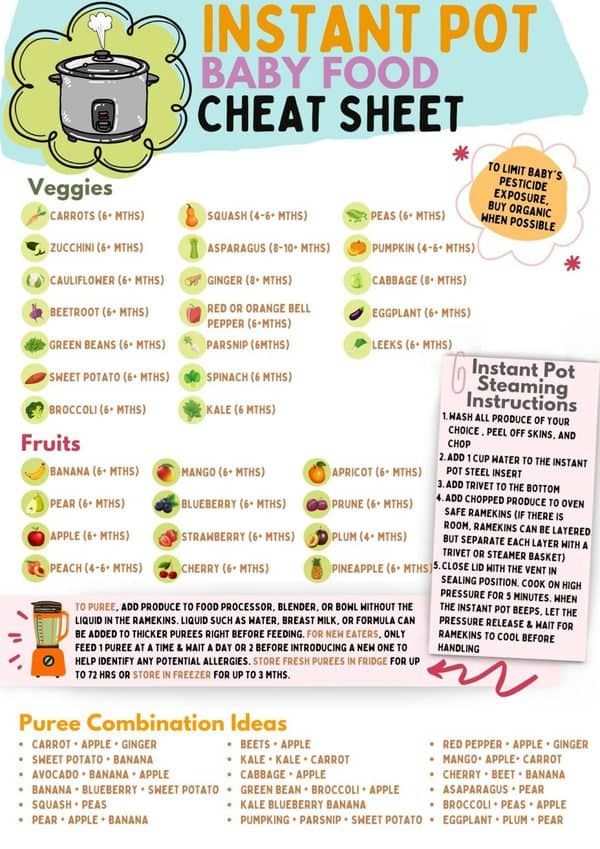 l. sugar and a pinch of salt. Add 300 g of cottage cheese with a fat content of at least 9%, 1 tbsp. l. semolina, 0.5 tsp. baking powder and a pinch of vanilla. We knead the resulting mass well and leave it for 10-15 minutes so that the semolina disperses. If desired, you can put a grated apple, a handful of raisins, banana slices or dried berries here.
l. sugar and a pinch of salt. Add 300 g of cottage cheese with a fat content of at least 9%, 1 tbsp. l. semolina, 0.5 tsp. baking powder and a pinch of vanilla. We knead the resulting mass well and leave it for 10-15 minutes so that the semolina disperses. If desired, you can put a grated apple, a handful of raisins, banana slices or dried berries here.
Lubricate ceramic molds with oil, sprinkle with ground breadcrumbs and fill with curd mass. We put them in the oven at 180 ° C for about half an hour. This cottage cheese casserole can be prepared for breakfast. Just let it cool down properly, garnish with mint and serve with sour cream.
Cake with an orange mood
Even homemade cakes can be charged with vitamins and made extremely healthy. Spicy carrot cake is just such a case.
In one container, mix 130 g flour, 1 tsp. baking powder, 70–80 g of sugar, 0.5 tsp each. cinnamon and ground ginger, a pinch of vanilla and nutmeg. In another container, beat 2 eggs with 80 ml of vegetable oil, pour 300 g of grated raw carrots.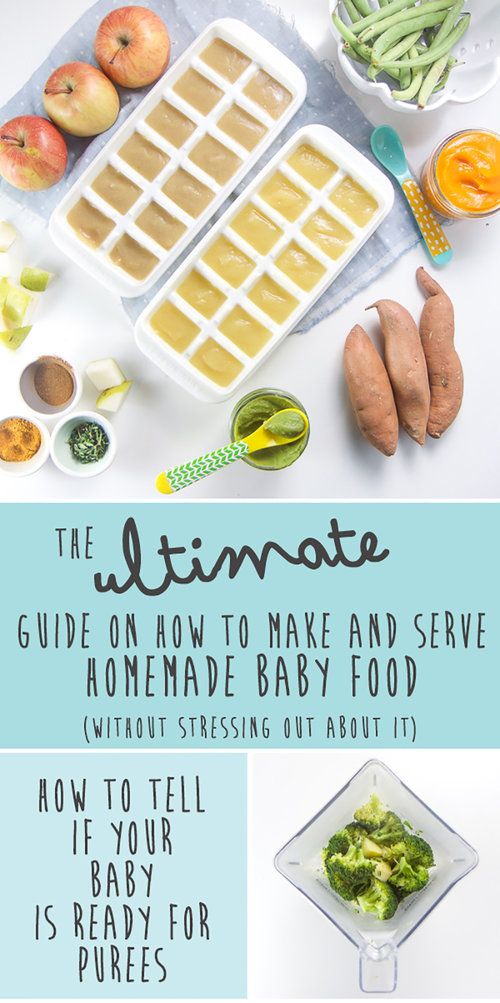 We combine dry and liquid bases, carefully knead the dough until a homogeneous consistency.
We combine dry and liquid bases, carefully knead the dough until a homogeneous consistency.
Fill buttered muffin tins with it and bake in the oven at 180°C for 40-45 minutes. When the carrot muffins cool down, they will taste even better. Serve a healthy dessert with whipped cream, and there won't be a crumb left.
Health cocktail
Almost all children drink milk with pleasure. Why don't we make a strawberry and banana milkshake?
Grind 200 g of fresh strawberries in a blender and rub the resulting mass through a sieve to get rid of small seeds. Mash a large ripe banana with a fork into a thick gruel. We combine strawberry and banana puree, add honey and vanilla sugar to taste, beat everything until a smooth consistency is obtained. Pour in 400 ml of milk and continue whisking until a fluffy foam appears. Pour the cocktail into tall glasses, decorate with mint petals and treat the children. Don't forget the colorful straws. It is much more pleasant to sip a thick fragrant cocktail through them.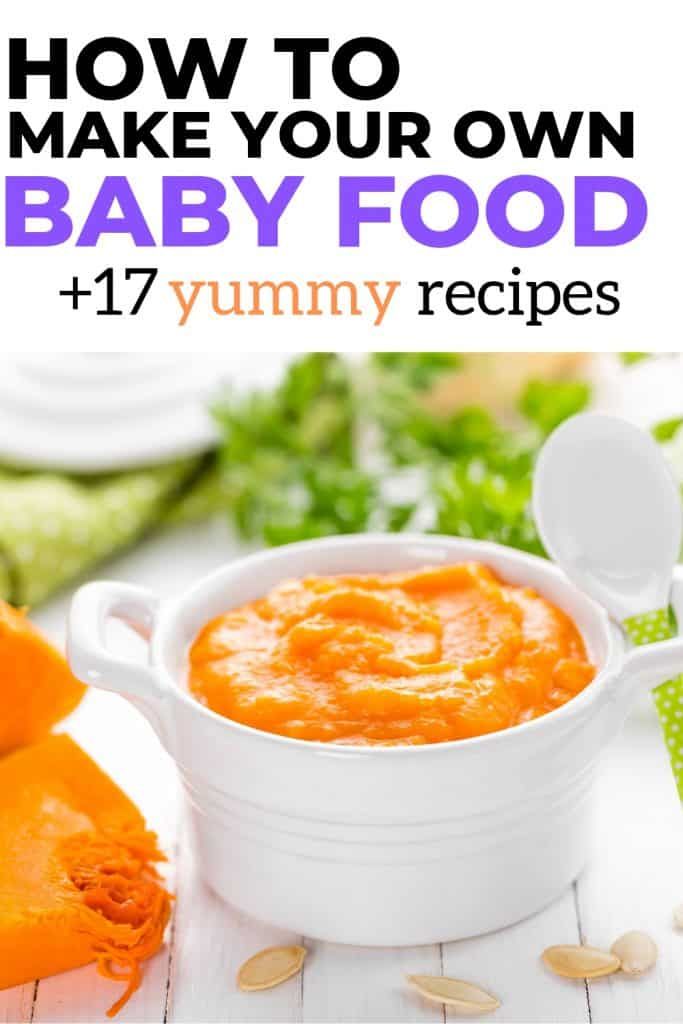
This is the vitamin menu we propose to prepare for your children. For more fun ideas, check out the recipes page from Eat at Home readers. And what vitamin dishes do you prepare for your child? Share branded recipes in the comments and tell us what helps you keep children's immunity normal.
Teach Children: 10 Healthy Eating Habits Recipes for Children's Meals
Recommended
Household Habits
To make sure your child develops healthy eating habits, start instilling them at an early age. By using fun and interesting interactions with food, you can help your child build a healthy relationship with food. We've put together 10 tips to help you instill healthy eating habits in your child for life.
Let them cook too
One of the best ways to make children love food is to let them participate in the preparation. Let your child help you come up with healthy recipes to cook together in the kitchen. Young children can help stir and pour, older adults can be in charge of weighing ingredients and using kitchen utensils such as a garlic press or blender (with your supervision and assistance).
Young children can help stir and pour, older adults can be in charge of weighing ingredients and using kitchen utensils such as a garlic press or blender (with your supervision and assistance).
Explore the farm shop
Take your child to the farm shop regularly to learn about seasonal vegetables, fruits and local produce such as meat and eggs. Tell them about seasonal foods, try different fruits and vegetables together, and discuss how they can be prepared at home. You can also engage local farmers in the conversation, who will share a lot of useful information with you and your children about what you are buying.
Plan snacks together
Children need to understand that snacking is not a time dedicated to eating unhealthy foods like candy. Sit down with your child and together plan a few snacks with his favorite healthy food, such as unsmoked pigtail cheese with grapes, carrots with hummus, or whole grain crackers with nut butter.
Set aside devices
Devices such as smartphones and tablets are the enemy of mindful eating. Set aside a bowl for your family members to leave their portable devices in before meals (parents too). So everyone can sit down at the table, relax and enjoy the food.
Maintain a positive atmosphere
Don't force your child to eat something they don't like and don't use food as a reward - all of which make food look negative. It's better to keep a positive atmosphere: let your child try new foods if he feels like it. Smelling and touching food (without eating) is just as important as eating. A child usually needs to interact with a new product 20 to 30 times to finally accept it. And, of course, a couple of words of encouragement in the direction of the child can play a big role.
Be a role model
Children learn by watching adults. If you show your kids that you're trying to eat right and make healthier food choices, they'll also be more health conscious when making their own decisions.
Brighten up your dinner
Department of Agriculture experts suggest that half your plate should be filled with fruits and vegetables. Encourage the children to build on this principle at every meal. Find out how many flowers they can fit on their plate. Keep a spreadsheet with the results, or have each child list the colors in their dish aloud.
Visit the farm
The best way to find out where food comes from is to visit the farm and harvest it yourself. Many farmers set aside special times when you can visit them. Find a local farm where customers can pick their own fruit and vegetables to buy later (for example, apples in the fall and berries in the spring).
Dine together as a family
Half the success of eating right is in creating a relaxed dining environment. Pleasant family conversations and enjoying food in a cozy atmosphere are part of a healthy eating regimen.